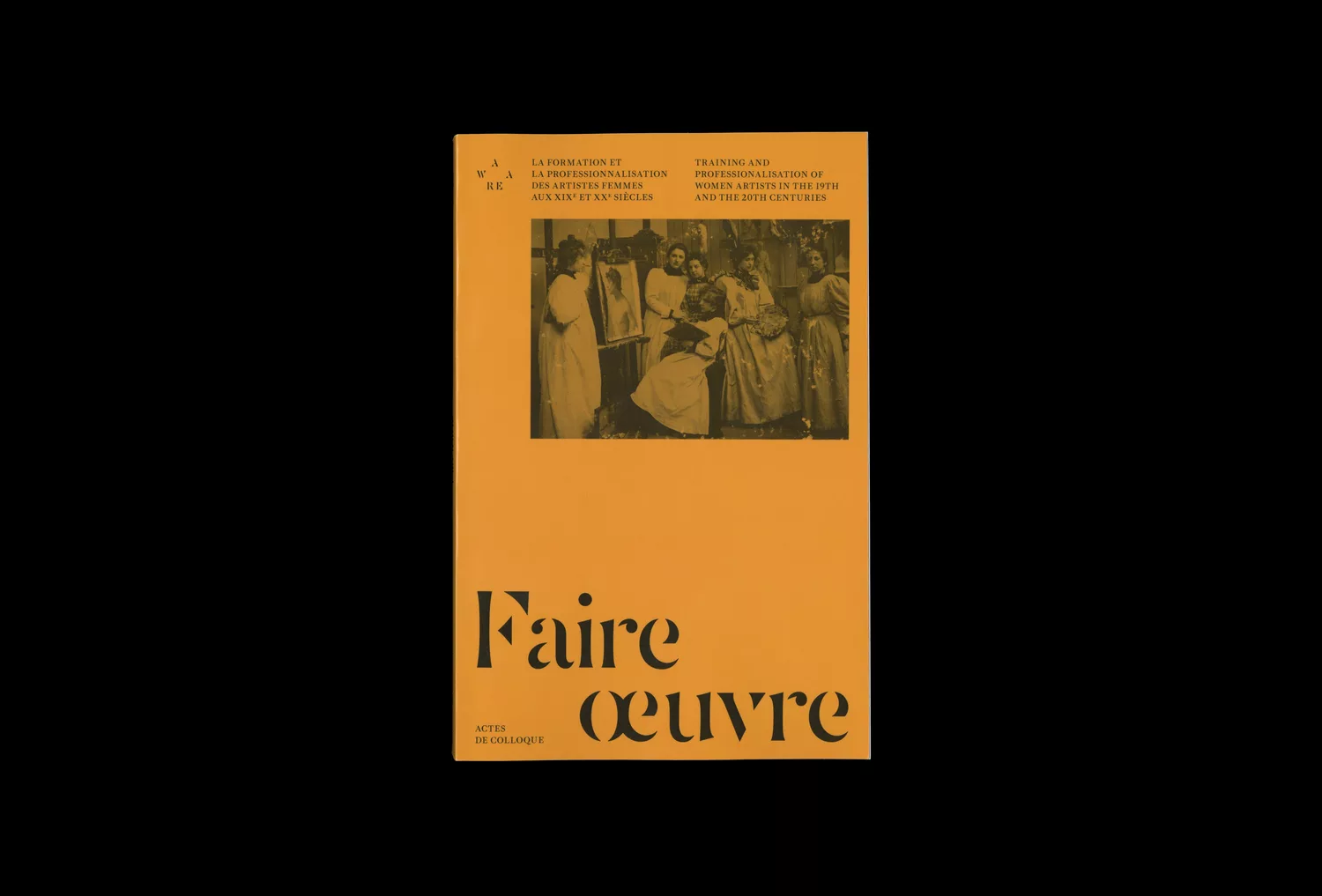Publications
Cet ouvrage fait suite à la tenue d’un colloque international pluridisciplinaire organisé les 19 et 20 septembre 2019 au Centre Pompidou et au musée d’Orsay, à Paris, en partenariat avec l’association AWARE (Archives of Women Artists, Research and Exhibitions). Intitulé Faire œuvre. La formation et la professionnalisation des artistes femmes aux XIXe et XXe siècles, le colloque entendait dresser un état actuel de la recherche sur l’accession des artistes femmes aux structures d’enseignement, en France et à l’étranger, qu’il s’agisse des ateliers, des académies privées ou des écoles publiques.
- Were Women Trained to become Artists or “Skilled Workers”? Public Tuition and Drawing Schools for Women and Girls in France in the 19th century Renaud d'Enfert
- The Cavé Method: Reproduction and Expression in the Project of a “School for Women” Luciana Lourenço Paes
- The Status of Women at the École Nationale Supérieure des Arts Décoratifs: writing a new narrative Lucile Encrevé
- Women’s Access to the École nationale des Beaux-Arts de Paris: The Struggles of the Union of Women Painters and Sculptors and of Their Allies Catherine Gonnard
- Equal Opportunities for Women. Supporting Aspiring Female Artists at the Royal Academy of Fine Arts of Brussels in the Late 19th Century Wendy Wiertz
- How to Become a Professional (Woman) Artist in Argentina? The Case of the Escuela Superior de Bellas Artes (1930s-1940s) Georgina G. Gluzman
- Gender, Models, Painters and Artistic Entrepreneurship: The Case of the Académie Vitti in Paris (1889–1914) Maria Antonietta Trasforini
- Swedish Women Sculptors at the Turn of the 20th Century. Backgrounds, Education and Professional Careers Linda Hinners
- Munich or Paris? Polish Women Artists Seeking Education at the turn of the 20th Century Ewa Bobrowska
- Women at the Académie Lhote Fanny Drugeon
- Pioneering Women: Lessons from Paris and the Making of an Art Scene in the American West Heather Belnap
- Veiled Recognition: Frances Hodgkins’s Subversion of English Art Establishments through Radical Pedagogy Samantha Niederman
- Militant Educational Spaces, Transmission of Artistic Knowledge and Political Awareness: The Klonaris/Thomadaki Super 8 Workshops in the 1980s Ana Bordenave
- If Not for France: The Evolving Art Education of Eliza Pratt Greatorex Katherine Manthorne
- Aspiration and Negotiation: Model-Artist Victorine Meurent in Her Time and in the History of Art Yelin Zhao
- Louise Bourgeois’s Artistic Training: Paris-New York Émilie Bouvard
- An artist at work. Conversation between Béatrice Casadesus and Scarlett Reliquet
Women’s Access to the École nationale des Beaux-Arts de Paris: The Struggles of the Union of Women Painters and Sculptors and of Their Allies
Catherine Gonnard
Abstract
In 1881, when the sculptor Hélène Bertaux and her friends founded the Union des femmes peintres et sculpteurs (Union of Women Painters and Sculptors), young women who wanted to become artists were not allowed to access free tuition at the École Nationale des Beaux-Arts in Paris and therefore could not compete in prestigious prizes. This situation would lead to a twenty-year struggle led successively by the Union’s two chairwomen, Hélène Bertaux and Virginie Demont-Breton. They received the support of the feminist press – La Citoyenne, followed by La Fronde – of educational theorists such as Édouard Petit, and of political leaders such as René Viviani. Their goal was not only to establish the professional status of women artists and their right to equal tuition alongside men, but also to grant women symbolic access to official art and its honours. This struggle, which is often overlooked by historians of feminism and art, was in fact considered exemplary by its contemporaries.


